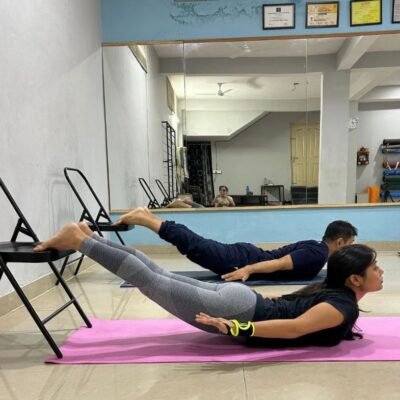Yoga for Chronic Pain: A Holistic Approach to Pain Management
- Home
- Medical Yoga Therapy
- Blog Detail
Chronic pain affects millions of people worldwide, limiting their daily function and reducing their quality of life. Many patients rely on pain medication and physical therapy to manage their symptoms, but yoga has emerged as a powerful complementary practice. With its combination of mindful movement, breathing exercises, and meditation, yoga can help influence pain perception, improve physical function, and promote overall well-being.
In this article, we’ll explore how yoga therapy can be an effective tool for pain management, particularly using yoga for chronic pain for those dealing with chronic low back pain, fibromyalgia, arthritis, and other chronic pain conditions.
Table of Contents
ToggleUnderstanding Chronic Pain and the Role of Yoga
Chronic pain is more a life and than just ongoing discomfort and suffering; it is a complex condition that affects both the body and mind. Unlike acute pain, which serves as a warning signal for injury, chronic pain persists beyond normal healing time, often lasting for months or even years. This prolonged suffering can lead to increased stress, anxiety, and depression, making it harder for individuals to manage their pain.
Yoga practices address both the physical and psychological aspects of pain and suffering. Research suggests that practicing yoga can create physiological changes in the nervous system, reducing pain sensations and stress responses while promoting relaxation and enhancing the mind-body connection in life.

Yoga for Chronic Low Back Pain
One of the most common chronic pain conditions is chronic low back pain, which affects millions of people worldwide. Traditional treatments for chronic pain such as physical therapy and pain medication offer relief, but many patients find that their pain persists despite these interventions and yoga alone. Yoga poses specifically designed for low back pain can help strengthen the core, improve flexibility, and relieve tension in the lower back.
Hatha yoga, in particular, has been studied for its benefits in reducing chronic low back pain. A pilot study found that using yoga classes and programs tailored to individuals with low back pain led to significant reductions in pain intensity and improved daily function. By incorporating Hatha or yoga classes into their routine, many patients experience pain relief and a greater sense of control over their condition.
The Science Behind Yoga and Pain Management
Recent research has shown that yoga practices can have a profound impact on the brain and nervous system. Mindfulness meditation and breathing exercises help regulate the stress response, reducing the perception of chronic pain itself. In controlled studies, individuals who practiced yoga techniques regularly reported less pain and improved overall well-being compared to those who relied solely on conventional treatments.
Furthermore, yoga therapists work with individuals to have health care providers create customized yoga programs that address specific health challenges. This personalized approach integrates physical therapy principles, mindfulness-based stress reduction (MBSR), and relaxation techniques to enhance the effectiveness of yoga therapy.
How Yoga Supports Patients with Chronic Pain Conditions
Yoga is particularly beneficial for individuals with conditions such as:
- Fibromyalgia: This condition causes widespread pain and fatigue. Gentle stretching and deep breathing improve physical function and reduce stress.
- Arthritis and Rheumatoid Arthritis: Regular yoga practice enhances joint mobility and reduces inflammation, providing pain relief for arthritis sufferers.
- Breast Cancer Survivors: Studies have shown that yoga can improve psychosocial well-being and reduce persistent pain in breast cancer survivors, including those with metastatic breast cancer.
The Importance of Breathing and Meditation in Pain Management
Breathing exercises and meditation play a crucial role in managing pain sensations. By focusing on the present moment and using controlled breathing, individuals can shift their awareness away from physical pain, and toward a sense of calm. Certified yoga instructors often incorporate breathing practices into their sessions to help patients develop a deeper connection with their bodies and improve their overall pain experience.

Yoga Techniques for Pain Relief
1. Yoga Poses for Pain Management
Certain yoga poses target chronic pain conditions by improving flexibility, strengthening muscles, and promoting relaxation. Effective poses yoga for chronic pain include:
- Cat-Cow Pose (Marjaryasana-Bitilasana) – Improves spinal flexibility and releases tension in the lower back.
- Child’s Pose (Balasana) – A gentle stretch that relieves lower back and hip pain.
- Bridge Pose (Setu Bandhasana) – Strengthens the lower back and core muscles, supporting spinal alignment.
2. Breathing Practices for Pain Management
- Diaphragmatic Breathing – Encourages full oxygen exchange, which reduces physical pain and promotes relaxation.
- Alternate Nostril Breathing (Nadi Shodhana) – Balances the nervous system, improving mental clarity and reducing stress.
- Ujjayi Breath (“Ocean Breath”) – Helps regulate the breath, reducing anxiety and promoting focus during yoga practice.
3. Mindfulness-Based Stress Reduction (MBSR)
MBSR combines mindfulness meditation with gentle movement to help individuals cope with chronic pain. Research shows that MBSR practice can lead to significant reductions in pain intensity and improve emotional resilience and pain itself.
4. Relaxation Techniques and Meditation
Meditation and guided relaxation techniques, practical tools such as body scans and visualization practices, help shift focus away from acute pain, and promote deep relaxation.
How Yoga Compares to Traditional Pain Treatments
- Yoga vs. Pain Medication: While medication provides temporary relief, it can come with side effects and risks of dependency. Yoga addresses the root causes of pain, including muscle tension, inflammation, and stress responses.
- Yoga vs. Physical Therapy: Physical therapy focuses on targeted rehabilitation, while yoga offers a holistic approach that includes mindfulness and stress management, complementing traditional treatments.
The Role of Yoga Therapists and Yoga Programs
Certified yoga therapists create personalized yoga programs tailored to individual health challenges. These programs incorporate specific yoga techniques, breathing exercises, and mindfulness practices to help patients manage persistent pain effectively. Healthcare providers increasingly recommend yoga as part of a comprehensive, persistent pain- management strategy, recognizing its benefits for individuals with rheumatic diseases, osteoporosis-related curvature, and other chronic pain conditions.
Yoga for Public Health: A Growing Awareness
With rising healthcare costs, there is a growing need for public awareness programs that promote non-invasive pain management solutions. Organizations like the Yoga Alliance advocate for the integration of yoga into mainstream healthcare, highlighting its role in self-care, stress reduction, and overall well-being.

Yoga and the Nervous System: Understanding Pain Perception
The nervous system plays a crucial role in the brain and how we sense and experience pain. Yoga helps regulate the body and nervous system by:
- Activating the Parasympathetic Nervous System – Encourages relaxation, reducing stress responses that worsen pain.
- Reducing Overactive Pain Pathways – Helps rewire the brain’s response to chronic pain, leading to long-term pain relief.
- Enhancing Mind-Body Awareness – Improves the connection between physical sensations and mental perception, making pain more manageable.
Yoga for Rheumatic Diseases and Autoimmune Conditions
Rheumatic diseases, including rheumatoid arthritis and fibromyalgia, cause chronic inflammation and joint stiffness. Yoga offers a gentle and effective alternative by:
- Improving joint mobility
- Reducing inflammation
- Enhancing mental resilience
Yoga for Cancer Survivors: Managing Pain and Enhancing Quality of Life
Cancer treatments can lead to lingering pain, fatigue, and reduced physical function. Yoga is a practice increasingly integrated into cancer recovery programs to make pain with:
- Reduce post-treatment pain
- Improve psychosocial well-being
- Support the immune system
Yoga for Anxiety
Anxiety can make the mind feel restless and overwhelmed, leading to excessive worry and tension. Yoga helps by activating the parasympathetic nervous system, which calms the body and mind. It encourages slow, mindful breathing and gentle movements to create a sense of stability and peace. It can help with:
- Calms the nervous system and reduces overactive thoughts
- Enhances emotional stability and promotes relaxation
- Encourages mindfulness, helping to stay present and focused
Yoga for Depression
Depression can drain energy, affect motivation, and lead to a sense of disconnection. Yoga helps by stimulating the release of mood-boosting neurotransmitters while promoting gentle movement and self-awareness. It encourages a positive mindset and helps break the cycle of negative thoughts. Yoga can help with:
- Boosts serotonin and dopamine levels, improving mood
- Increases energy and motivation by stimulating circulation
- Encourages self-awareness and positive thinking
Yoga for PTSD
Post-Traumatic Stress Disorder (PTSD) can cause intrusive memories, emotional distress, and a heightened brain and body stress response. Yoga offers a safe and grounding practice that helps individuals reconnect with their bodies, regulate emotions, and build resilience against triggers. It can help with:
- Helps regulate the body’s stress response and reduce hypervigilance
- Encourages a sense of safety and control through mindful movement
- Promotes emotional release and trauma healing

Yoga for Burnout
Burnout results from prolonged stress and emotional exhaustion, leading to fatigue and reduced motivation. Yoga helps by calming the nervous system, improving energy levels, and creating a space for relaxation and self-care. It can help with:
- Lowers cortisol levels, reducing chronic stress and fatigue
- Enhances relaxation and restores mental clarity
- Improves overall energy levels and emotional resilience
With consistent practice, yoga provides a natural way to support mental well-being, helping individuals find balance, strength, and inner calm.
Conclusion
Yoga offers a holistic approach to chronic pain management by addressing both the physical and psychological aspects of pain. Through mindful movement, breathing exercises, and meditation, yoga for chronic back can help individuals reduce pain intensity, enhance mobility, and improve overall well-being. As awareness grows, yoga for chronic back is becoming an essential part of integrative healthcare, providing a natural and sustainable way to manage chronic pain conditions.
Share this


About Us
Quick Links
Contact Info
- B-69, Arya Samaj Mandir, Sector - 33, Noida, Uttar Pradesh 201301
- +91-8800094560
- yogawithbarkha.27@gmail.com
